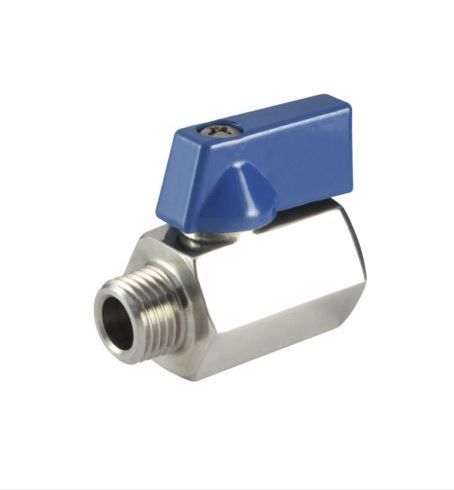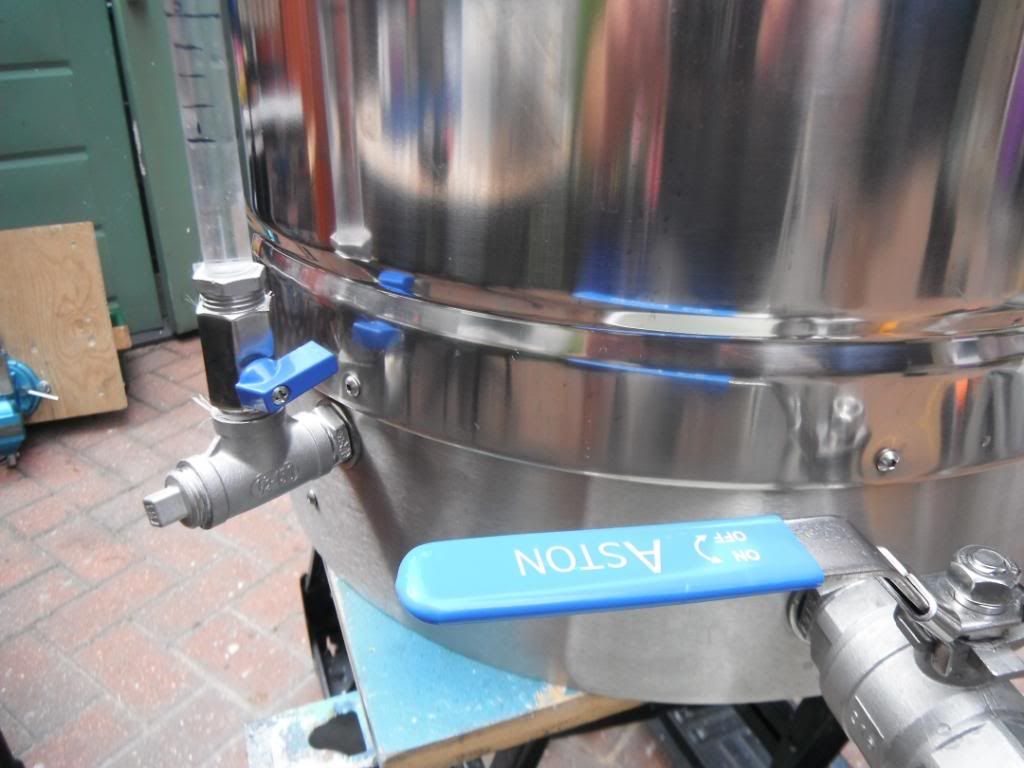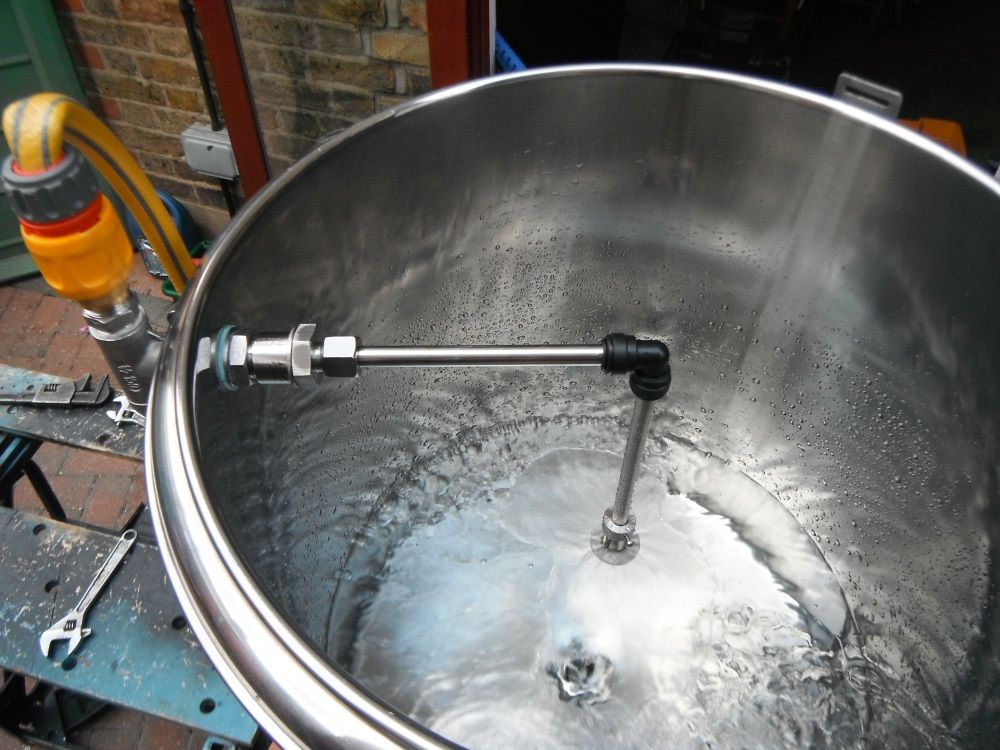I wanted to put a sight glass on my 60L thermopot HLT/boiler and I wanted to avoid drilling another hole through the side of the pot or through the bottom. The boiler is also used as an additional mash tun from time to time by inserting a false bottom. So I put a sight glass on my HLT/boiler by teeing off the ball valve, and I've never been totally happy with it. It works fine when filling the vessel, but when the valve is open and draining, a suction effect pulls down the water in the sight glass tube and you lose the measurement. The level in the sight glass will read way lower than the actual volume in the vessel. If thatâs not defeating the purpose of a sight glass, I don't know what is. When you close the ball valve the level in the sight glass bounces up and down for a while before it gives an accurate measurement again of the liquid in the vessel.
Forgetting my school boy physics, I now realise that the depressed level in the sight glass is because of the Venturi effect. Simply put, moving liquid past a hole decreases the pressure at the hole (the âholeâ being where the sight glass connection joins the tee at the ball valve junction). In the case of a sight glass, the pressure decrease means the water is pushed down by atmospheric pressure, reducing the reading. The pressure decrease is proportional to the speed of flow - so when the boiler is fuller, a faster flow out through the ball valve means a more depressed reading.
I use 1 inch ball valves and 1 inch 150 lb stainless steel fittings and I didn't want to disconnect and re-plumb all my outlets. I didn't really want to reposition the sight glass entry points either, since the big advantage of teeing off the ball valve is that, when not draining, the sight glass gives a true reflection of the liquid in the vessel. There is also no additional loop in the sight glass connection that retains liquid, as in bottom and side wall connections for a sight glass. Something at the back of my mind thought that some sort of bleed valve might be the answer, so after some experimentation I have come up with a workable and accurate solution that is not affected by draining through the ball valve.
What I have done is fit a ½" BSP stainless steel mini ball valve at the bottom end of the sight glass. By adjusting how far this mini valve is open you can introduce fluid friction on the water as it falls in the sight glass. By experimenting with this adjustment you can reach a point where the friction of the dropping water leaving the tube just balances the lowering of pressure at the tee junction. By marking this âsweet pointâ, you will find that the tube now gives an accurate measurement of both filling and draining the vessel, without the suction effect influencing the reading. There is also no âbounce-backâ in the tube when you close the main ball valve. The pictures of the fitting and the balancing mark are shown below.



The final plus with this new arrangement is that by closing the mini valve completely you now have a readymade entry point at the top of the sight glass to feed in a HERMS flow or a sparging connection. See the pics below to see what I mean.


Incidentally, I don't use these yellow hoses when sparging, nor do I let my mash liquor drain away! This was done by connecting to the cold tap just to show how it would work when sparging.
Forgetting my school boy physics, I now realise that the depressed level in the sight glass is because of the Venturi effect. Simply put, moving liquid past a hole decreases the pressure at the hole (the âholeâ being where the sight glass connection joins the tee at the ball valve junction). In the case of a sight glass, the pressure decrease means the water is pushed down by atmospheric pressure, reducing the reading. The pressure decrease is proportional to the speed of flow - so when the boiler is fuller, a faster flow out through the ball valve means a more depressed reading.
I use 1 inch ball valves and 1 inch 150 lb stainless steel fittings and I didn't want to disconnect and re-plumb all my outlets. I didn't really want to reposition the sight glass entry points either, since the big advantage of teeing off the ball valve is that, when not draining, the sight glass gives a true reflection of the liquid in the vessel. There is also no additional loop in the sight glass connection that retains liquid, as in bottom and side wall connections for a sight glass. Something at the back of my mind thought that some sort of bleed valve might be the answer, so after some experimentation I have come up with a workable and accurate solution that is not affected by draining through the ball valve.
What I have done is fit a ½" BSP stainless steel mini ball valve at the bottom end of the sight glass. By adjusting how far this mini valve is open you can introduce fluid friction on the water as it falls in the sight glass. By experimenting with this adjustment you can reach a point where the friction of the dropping water leaving the tube just balances the lowering of pressure at the tee junction. By marking this âsweet pointâ, you will find that the tube now gives an accurate measurement of both filling and draining the vessel, without the suction effect influencing the reading. There is also no âbounce-backâ in the tube when you close the main ball valve. The pictures of the fitting and the balancing mark are shown below.



The final plus with this new arrangement is that by closing the mini valve completely you now have a readymade entry point at the top of the sight glass to feed in a HERMS flow or a sparging connection. See the pics below to see what I mean.


Incidentally, I don't use these yellow hoses when sparging, nor do I let my mash liquor drain away! This was done by connecting to the cold tap just to show how it would work when sparging.



